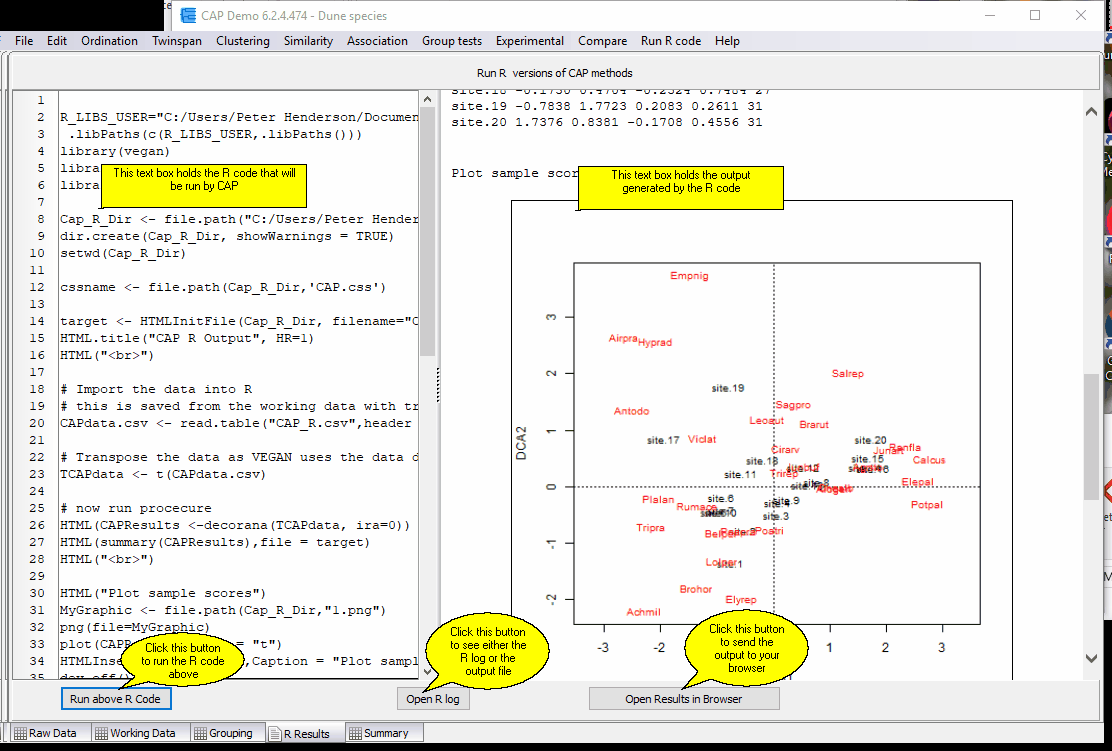Select this option to undertake Multi-Dimensional Scaling using R. The Jaccard similarity measure will be used, this is considered a good measure for qualitative (presence/absence) data.
The data set used will be your working data.
Multi-Dimensional Scaling (MDS) is a technique for expressing the similarities between different objects in a small number of dimensions. Hopefully, this allows a complex set of inter-relationships to be summarised in a simple figure. The method attempts to place the most similar objects (samples) closest together. The starting point for the calculations is a similarity or dissimilarity matrix between all the sites or quadrats. These can be non-metric distance measures for which the relationships between the sites/objects/samples (columns) cannot be plotted in a Euclidean space. The aim of Non-metric MDS is to find a set of metric coordinates for the sites which most closely approximates their non-metric distances.
The basic MDS algorithm is as follows:
| 1. | Calculate the similarity or dissimilarity between sites. |
| 2. | Assign to each site a set of coordinates in p-dimensional space. These coordinates can be either chosen at random or chosen using Principal Coordinates Analysis (note, this is not the same as a Principal Component Analysis). The value of p is chosen by the user. |
| 3. | Compute the Euclidean distance between these sites using the starting coordinates. |
| 4. | Compare the original dissimilarity between the sites with these Euclidean distances by calculating a stress function. The smaller the stress function, the closer the correspondence. |
| 5. | Adjust the positions so as to reduce the stress. |
| 6. | Repeat 2 to 4 until the stress is minimised or the maximum number of iterations is reached. |
